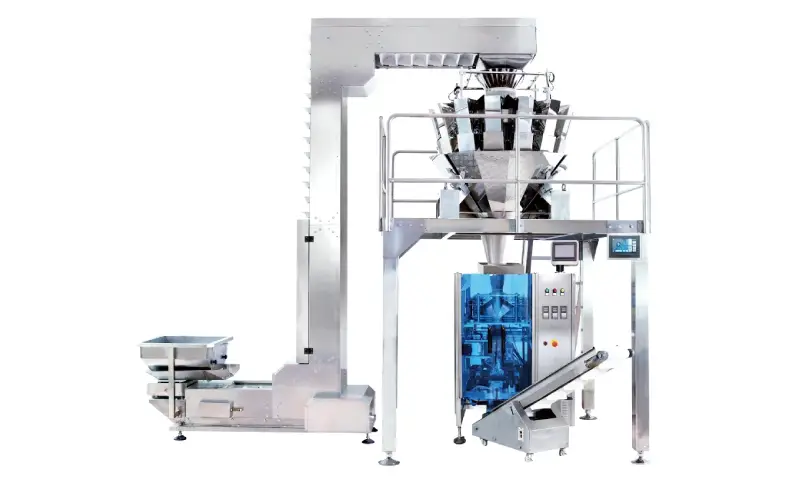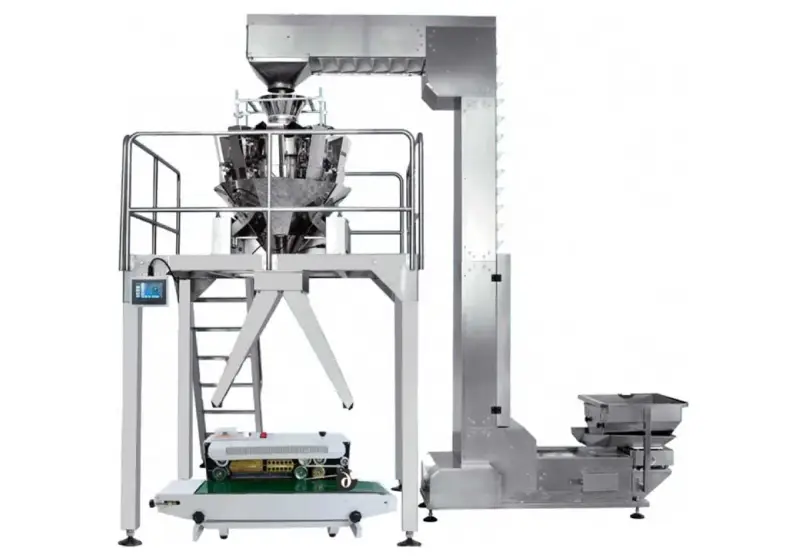Automatic bagging machines offer unparalleled efficiency in modern packaging operations. By automating the bagging process, these machines drastically reduce manual labor requirements and increase output rates. They excel in streamlining tasks such as filling, weighing, sealing, and labeling, all within a single, integrated workflow. This automation not only speeds up production but also ensures consistency and accuracy in packaging, minimizing material waste and improving overall product quality. Advanced features such as precise weighing systems and programmable settings allow for customization based on product specifications, optimizing each bagging cycle.
Introduction To Automatic Bagging Machines
In the fast-paced world of modern industrial processes, efficiency is paramount. Automatic bagging machine play a crucial role in optimizing packaging operations, ensuring products are securely packaged at a rapid pace. These machines are designed to streamline the packaging process by automating tasks that were once labor-intensive and time-consuming.
Automatic bagging machines, often integrated into production lines, are specialized equipment used to automatically fill and seal bags with a wide range of products. They are essential in industries such as food and beverage, pharmaceuticals, agriculture, and manufacturing. These machines not only increase the speed of packaging but also ensure consistency and accuracy, ultimately enhancing overall operational efficiency.

Key Features Of Automatic Bagging Machines
Automatic bagging machines are equipped with a range of advanced features that contribute to their efficiency. These machines typically include conveyor systems, which transport products to and from the bagging area, optimizing the flow of materials. Additionally, weighing systems ensure precise measurements of product quantities, which is crucial for compliance and cost control.
Sealing mechanisms, another key feature, securely close and seal bags to maintain product freshness and integrity. Visuals or diagrams can effectively illustrate how these components work together seamlessly within the bagging machine, providing a clear understanding of their functionality.
Advantages Of Using Automatic Bagging Machines
The adoption of automatic bagging machines brings significant advantages to businesses. Firstly, these machines drastically enhance speed and productivity compared to manual processes. They can fill and seal bags at rates far exceeding human capability, leading to substantial increases in throughput.
Secondly, automatic bagging machines offer unparalleled accuracy in packaging. This precision ensures consistent product weights and measurements, reducing product giveaway and minimizing material waste. Moreover, by automating these tasks, businesses can reduce labor costs and allocate human resources to more value-added activities.
Real-world examples highlight the impact of automatic bagging machines. For instance, a large-scale food processing company was able to increase its packaging output by 50% after implementing automatic bagging technology. This boost in efficiency translated into significant cost savings and improved customer satisfaction due to faster order fulfillment.
Factors Affecting Efficiency
Several factors can influence the efficiency of automatic bagging machines. Proper maintenance of equipment is crucial to prevent downtime and ensure consistent performance. Regular calibration of weighing systems is essential for accuracy, preventing errors in product measurement.
Software integration also plays a key role in efficiency. Seamless integration with existing production software enables real-time data exchange and monitoring, optimizing workflow and reducing errors. Training operators to use the equipment effectively further enhances efficiency and minimizes operational disruptions.
Improving Throughput And Speed
To maximize throughput and speed without compromising quality, businesses can implement various strategies. Optimizing the packaging process layout can reduce unnecessary movement and streamline material flow. Additionally, investing in advanced automation technologies, such as machine learning algorithms, can further enhance operational speed.
Machine learning algorithms can analyze production data in real-time, identifying patterns and optimizing machine settings for maximum efficiency. This intelligent automation reduces the reliance on manual adjustments and speeds up the entire packaging process.
Conclusion
Automatic bagging machines represent a fundamental advancement in modern packaging operations, offering unparalleled efficiency and productivity gains. By automating key tasks such as filling, weighing, and sealing, these machines significantly reduce labor costs and enhance throughput.
However, achieving optimal efficiency requires careful consideration of various factors, including maintenance, calibration, and software integration. By addressing these factors and implementing strategies to enhance throughput and speed, businesses can fully leverage the advantages of automatic bagging machines, ultimately gaining a competitive edge in their respective industries.

Leif Aleksandra, a nomadic wordsmith with roots spanning continents, captures the essence of diverse cultures in his tales. With a pen dipped in wanderlust, Leif traverses the landscapes of imagination, blending the flavors of his global experiences into narratives that resonate with universal truths.




